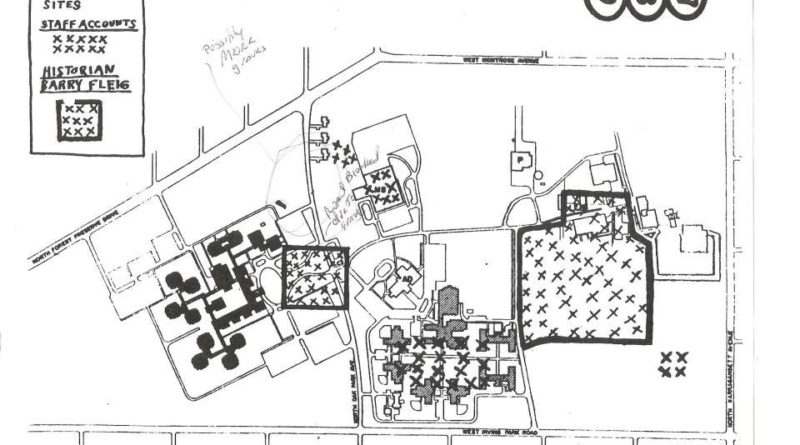Mass Grave Underneath Proposed Location for Chicago’s Dunning School
CHICAGO — One of the plot points of the cult horror film “Poltergeist” is that the supernatural mayhem that befalls a suburban tract home was precipitated by a shady developer who merely moved the headstones and not the bodies when relocating a cemetery. At least there were headstones to move — Chicago Public Schools is planning to build a high school on the former site of the Cook County Poor Farm and Insane Asylum, which had a mass, unmarked grave on its premises.
And by “mass,” that’s in the ballpark (or should that be “memorial” park?) of 38,000 bodies interred on the grounds between 1855 and 1912, according to Curbed. To quote young Carol Anne from the movie, “They’re here!” But developers don’t know exactly where within the site’s 320 acres.
Bodies were uncovered by developers as recently as 1989 when workers found remains when laying pipe for a condominium complex. Now, the prospect of unearthing additional deceased is a grim reality facing the proposed $70 million high school project for the Dunning community on Chicago’s Northwest Side.
The proposed three-story brick building would accommodate about 1,100 students and alleviate overcrowding at nearby Taft High School. As for when a student body will replace the dead bodies on the property, milestones are still being discussed. At a presentation in October 2017, Chicago Public Schools demographics director Jim Dispensa alluded to the “archeological concerns” that plague the project and how the city might manage them.
The city’s Public Building Commission dug trenches through the site of the school, studied archeologists’ maps and used radar technology to search for human remains, according to spokesman Bryant Payne. They also drew up a five-page list of “archaeological protocols,” instructing workers remove and relocate any remains they find. — Curbed
Fortunately, the Northwest Chicago Historical Society unearthed a map drawn in the 1990s by a Chicago-Read Mental Hospital administrator that marks where human remains are located, which should prove a boon to workers tasked with removing the bodies. Whether or not the dead can be identified is another story.
Historian Mounted Massive Dunning Identification Project
Barry Fleig, a former cemetery chairman of the Chicago Genealogical Society, spearheaded efforts to identify Dunning’s buried and released a database in 2014, reported DNAInfo, a Chicago news service. As gallant as the attempt was painstaking, Fleig’s efforts only yielded a database of 8,000 names at the time of that report, though the project has continued. Records show that by 1890, Cook County was burying about a thousand bodies on the site every year, but matching death certificates to the deceased is an onerous prospect.
“These are the people who fell through the cracks,” Fleig told the Chicago Tribune when the database was first made available. “These poor people were forgotten, but they don’t have to be forgotten anymore.”

